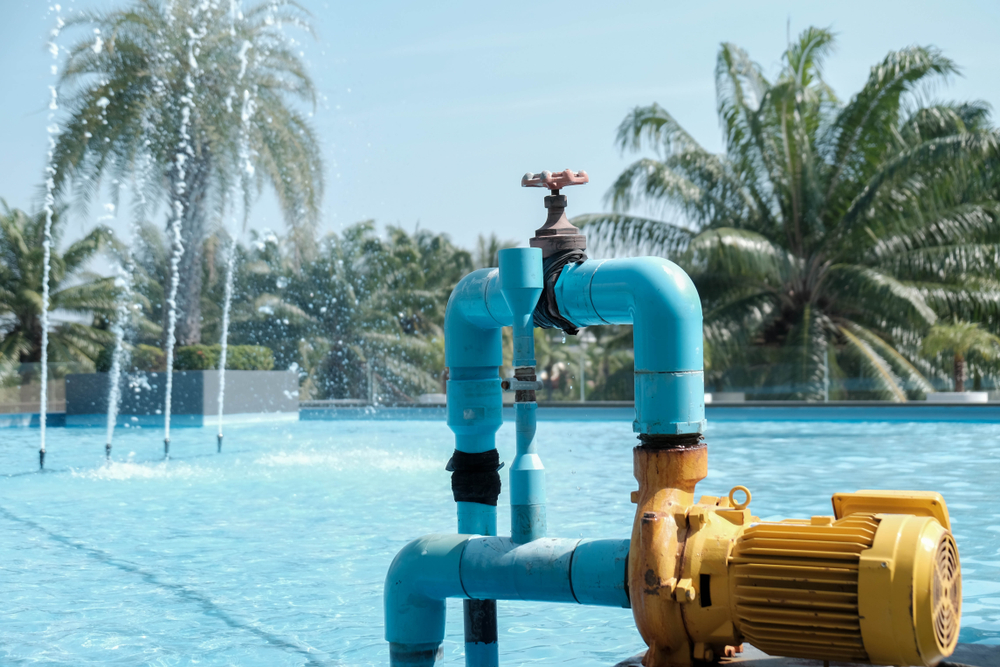Your pool pump is the heart of your pool's circulation system and is responsible for keeping the water clean and clear.
Over time, even the most reliable pumps may start showing signs of wear and tear. Knowing when it's time to replace your pool pump is crucial for maintaining the efficiency and functionality of your pool system while avoiding potential problems down the line.
This guide will provide the essential information to help you determine when to replace your pool pump.
1. Age of the Pump
Like all mechanical equipment, pool pumps have a finite lifespan. Most pool pumps are designed to last around 8 to 12 years with proper maintenance and usage.
If your pump is approaching or has exceeded this age range, it's a good indicator that it may be time for a replacement.
Older pumps are more prone to breakdowns, reduced efficiency, and increased energy consumption.
2. Decreased Efficiency
One of the primary functions of your pool pump is to circulate and filter the water.
If you notice a significant decrease in water circulation, it may be a sign that your pump is losing efficiency.
This reduced circulation can lead to poor water quality and chemical imbalance, making maintaining a clean and clear pool harder.
If your pump is no longer providing the necessary flow rate, it's time to consider a replacement.
3. Strange Noises
Unusual noises from your pool pump, such as grinding, squealing, or rattling, clearly indicate something is amiss.
Worn-out bearings, damaged impellers, or other internal issues may cause these noises.
Ignoring these sounds can lead to further damage and potential pump failure. If your pump is making unusual noises, it's best to have it inspected and, if necessary, replaced.
4. Leaks and Visible Damage
Visual inspection is a straightforward way to assess the condition of your pool pump.
Look for signs of leaks around the pump housing or connections.
Corrosion, rust, or cracks in the pump housing indicate wear and potential structural issues.
Any visible damage should be addressed promptly, and if the damage is extensive, it may be more cost-effective to replace the pump rather than attempt repairs.
5. High Energy Bills
A pool pump working harder than it should can lead to increased energy consumption and higher utility bills.
As pumps age, they often become less energy-efficient. If you've noticed a significant spike in your energy costs without a corresponding increase in pool usage, it may be a sign that your pump is no longer operating efficiently.
Upgrading to a more energy-efficient pump can save you money in the long run.
6. Difficulty in Priming or Starting
It can be frustrating and time-consuming if your pool pump struggles to prime or start consistently.
Difficulty in priming can indicate problems with the pump's suction, such as clogged or damaged impellers.
Frequent priming or starting issues indicate that your pump is struggling and may need replacement.
7. Inadequate Flow Rate
A well-functioning pool pump should provide a consistent flow rate to ensure proper water circulation and filtration.
If you're experiencing a drop in flow rate, it can lead to poor water quality and inadequate filtration.
This can result from wear and tear on the pump's internal components. If flow rate issues persist despite maintenance, it's a sign that your pump may need replacement.
Conclusion
In conclusion, knowing when to replace your pool pump is essential for maintaining the health and efficiency of your pool system.
Factors like the age of the pump, decreased efficiency, strange noises, leaks, high energy bills, priming difficulties, and inadequate flow rate all serve as valuable indicators.
Regular maintenance and proactive replacement when necessary can save you time, money, and the frustration of dealing with pool pump issues down the road.

